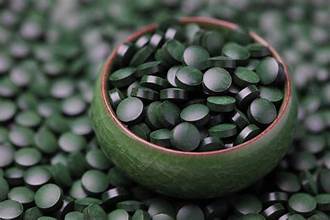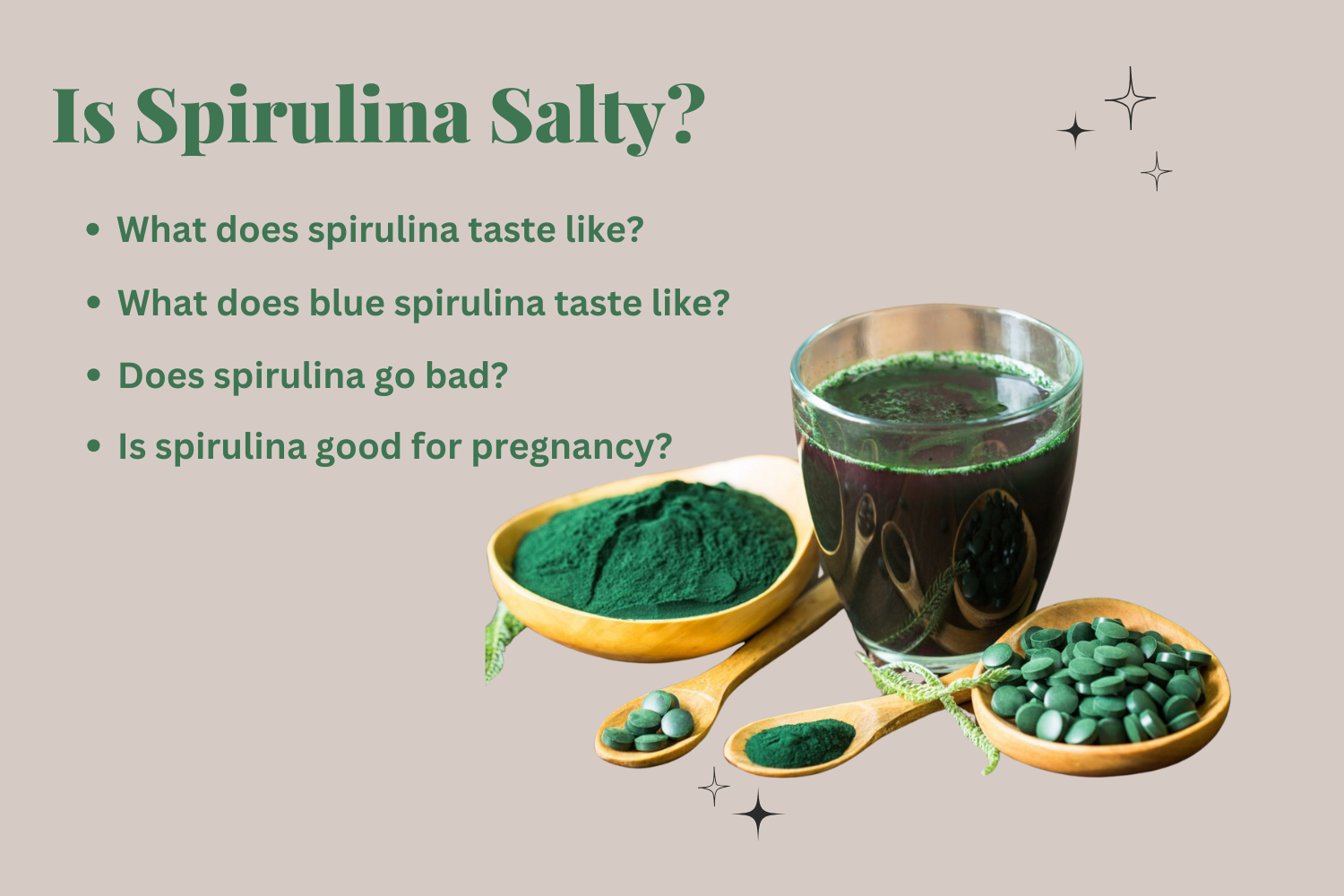Have you ever wondered, “Is spirulina salty?” If you’re new to spirulina, you might be curious about its flavor and whether it’s something you’d enjoy. Spirulina is a type of blue-green algae that has gained popularity as a superfood due to its nutritional benefits. But how does it taste, and can you handle its unique flavor? Let’s dive into the taste of spirulina, focusing on whether it’s salty, and how to incorporate it into your diet.
What Is Spirulina?
Spirulina is a blue-green algae found in both fresh and saltwater. It is often called a “green protein” because it is packed with essential nutrients like protein, vitamins, and minerals. Spirulina has been a part of the human diet for centuries, especially in regions where it grows naturally in shallow lakes and ponds.
Today, it’s cultivated in controlled environments, making it a popular supplement for health enthusiasts. Its vibrant blue-green color is a visual giveaway of its nutrient-dense nature.
Is Spirulina Salty?
If you’ve asked yourself, “Is spirulina salty?” the answer is yes, but the saltiness is subtle. Spirulina, especially in its powder form, carries a mild, salty flavor that might remind you of the ocean. It’s not overwhelmingly salty like sea salt, but it does have a noticeable sea-like taste. This slight saltiness comes from the minerals that naturally occur in spirulina, contributing to its health benefits.
The salty taste can be a little surprising to those new to spirulina, but it can be an enjoyable addition to a variety of dishes. Whether you’re adding it to smoothies, energy bars, or salad dressings, the flavor remains subtle enough not to overpower your meal.

What Does Blue Spirulina Taste Like?
When it comes to blue spirulina, the taste is quite mild, but still slightly salty. Many people describe the flavor as earthy or even slightly fishy, but it’s not unpleasant. The taste of spirulina is often compared to seaweed or fresh spinach. It’s not the kind of flavor that stands out drastically in a dish, but it does have its own unique profile that some may need time to get used to.
The consistency of blue spirulina is similar to mashed potato when it’s mixed into liquids, and you’ll find that the saltiness becomes more prominent when it’s consumed in larger quantities. However, for most people, the taste isn’t overpowering enough to detract from its nutritional benefits.
Can You Mask The Taste Of Spirulina?
If you’re wondering how to incorporate spirulina into your meals without focusing too much on the salty taste, you’re in luck! There are plenty of ways to use spirulina while masking or complementing its flavor. Adding it to smoothies, for example, can help balance its taste with fruits like bananas or pineapple. Blue spirulina also makes a colorful addition to smoothie bowls, where its taste is mellowed by the other ingredients.
Another popular option is to mix spirulina into salad dressings, soups, or even baked goods. These methods allow you to benefit from spirulina’s nutrients without its salty taste becoming the highlight of your dish.
FAQ
1. Is spirulina salty?
Yes, spirulina has a mild, salty taste, similar to the ocean.
2. What conditions does spirulina grow in?
Spirulina grows in both freshwater and saltwater environments, typically in warm, alkaline conditions.
3. What does spirulina taste like?
Spirulina has an earthy, slightly salty taste, similar to seaweed or fresh spinach.
4. What does blue spirulina taste like?
Blue spirulina has a mild, slightly salty, sea-like taste with an earthy undertone.
5. Does spirulina go bad?
Yes, spirulina can spoil if not stored properly. Keep it in a cool, dry place to extend its shelf life.
6. Does spirulina taste like fish?
No, spirulina doesn’t taste like fish. It has more of an earthy, slightly salty flavor.
7. Is spirulina good for pregnancy?
Spirulina is rich in nutrients, but it’s important to consult with a doctor before using it during pregnancy.

